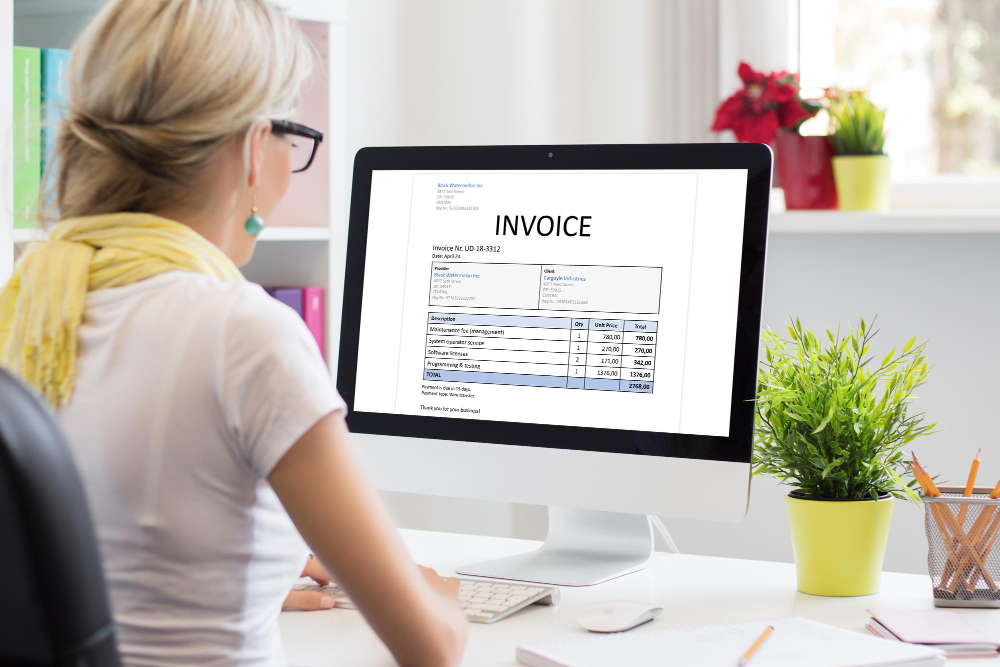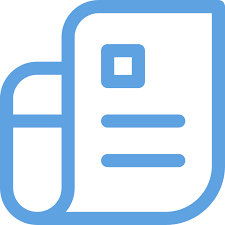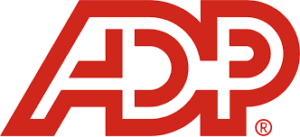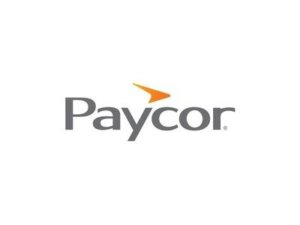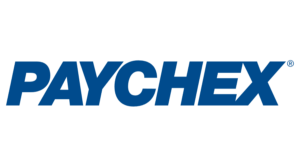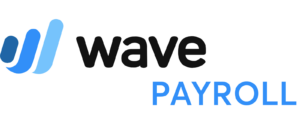Invoicing software can benefit small businesses by improving inventory accuracy, reducing carrying costs, and enhancing order fulfillment. In this blog post, we’ll review some of the best options on the market and provide real-life examples of small businesses that have seen significant improvements in their operations after implementing inventory management software.
Top Invoice Software Options for Small Business
Quick View
- FreshBooks: Best overall invoice and accounting software
- Square Invoices: Best invoicing software for its user-friendliness
- Zoho Invoice: Best for cost-friendliness
- Xero: Best for startup businesses
Pricing
- Lite – $8.50 per month
- Plus – $15.00 per month
- Premium – $27.50 per month
- Custom pricing
- Free
- $20 per month
Free
- Early – $13 per month
- Growing – $37 per month
- Established – $70 per month
Features
- Invoicing
- Expenses
- Estimates and proposals
- Time tracking
- Projects
- Payments
- Accounting+ reports
- Projects
- Clients
- Mobile features
- Invoicing
- Customization
- Estimates
- Contracts
- Projects
- Reporting
- Customers
- Cashflow
- Dashboard
- Invoicing & Estimates
- Contact Management
- Expense Tracking
- Inventory
- Project Management
- Time Tracking
- Reporting & Tax Support
- Xero dashboard
- Sales overview
- Xero invoicing
- Quotes
- Client Portal
- Contact management
- Xero expense tracking
- Inventory
- Bank reconciliation
- Chart of accounts
Ease of Use
Customer Support
- Phone
- Help Center
- Webinar
- Social media
- Chat
- Phone
- Support Center
- In-app support
- Seller Community
- Video support
- Phone
- Support form
- Live chat
- Knowledgebase
- YouTube
- Social Media
- Live chat
- Help Center
Quick Verdict
Freshbooks: Overall Best Invoice Software for Small Business
FreshBooks is the preferred choice for business owners who regularly send invoices. It provides a wide range of user-friendly and efficient invoicing features. With FreshBooks, you can automate invoicing, create branded invoices, and accept online payments.
This affordable and intuitive software is designed specifically for small businesses. Its feature-rich platform enables users to easily and quickly send invoices and receive payments. As a result, FreshBooks is our top recommendation for small business invoicing software.
Best Invoice Software for Small Business
FreshBooks is a small business software that offers key accounting features and double-entry accounting, along with various integrations. FreshBooks is known for its user-friendly interface and exceptional customer support, and also offers built-in proposals, making it a viable option for some small businesses.
Pricing
Freshbooks’ lowest plan is about $8.50 per month and the highest plan is custom. This is pricey when compared to Square Invoices. There are two other pricing tiers in between. Only the two highest levels include double-entry accounting and its associated features.
Users can choose between monthly or yearly payment options, with an additional 10% discount for yearly subscriptions. A free 30-day trial is available without requiring any banking or credit card information, and users can cancel at any time. The custom plan option that FreshBooks offers helps to fit specific business needs.
Features
FreshBooks’ accounting software provides a wide range of features that cover essential accounting needs and comes with several built-in automation to increase productivity. Notable features include Invoices and Estimates, Contact Management, Bookkeeping, Project Management, Time Tracking, Reporting and Budgeting, and Tax Support.
With FreshBooks, small business owners can easily create and manage invoices, track their projects and time spent on them, manage their contacts, and handle bookkeeping tasks. Additionally, FreshBooks’ software provides support for tax filing and generates various reports to help business owners keep track of their finances.
Ease of Use
FreshBooks’ user interface has always been user-friendly, and the company has been continuously updating it with small navigational improvements to enhance usability. FreshBooks listen to users’ feedback and has worked to address previous navigational challenges. Setting up and using the software is straightforward, even if you don’t have prior bookkeeping experience.
Customer Support
FreshBooks provides several support options to its users. You can contact their phone support from Monday to Friday between 8 AM-8 PM Eastern. Emails are usually answered within a few hours. The in-software help section allows you to search the built-in help center, leave a question for the FreshBooks team, or access their FAQs, email, and phone number. FreshBooks offers two separate help centers for FreshBooks and FreshBooks Classic.
You can also attend a free introductory webinar to become familiar with the software. FreshBooks maintains active social media accounts on Facebook, Twitter, LinkedIn, Pinterest, and Instagram, and a well-developed YouTube channel with how-to videos, getting started demonstrations, advice for small businesses, and customer testimonials.
- Customizable invoices are unlimited
- All plans have a client portal
- Freshbooks is easy to use
- Lacks a free plan
- FreshBooks has branding on most plans
Why We Chose It
We chose Freshbooks Invoices as the best invoice software for small businesses because it is designed to cater to small businesses. However, its versatility and robust features make it equally suitable for growing businesses.
Square Invoices is an ideal invoicing solution for small businesses, offering a free or low-cost plan for online and in-person invoicing. The platform caters to both service-based and product-based businesses, providing inventory management and the ability to accept payments online or in person.
Processing rates remain the same across both plans, with unlimited invoices and recurring invoicing available for all users. Paid plan users can add custom fields and set up milestone-based invoices. Square Invoice is the best invoice and accounting software for small businesses.
Pricing
Square Invoices offers two pricing plans: a free plan and a paid plan for $20 per month. Both plans have the same processing rates for online and in-person payments, with the free plan charging 2.9% plus 30 cents per online payment and 2.6% plus 10 cents per in-person payment.
The paid plan includes additional features such as the ability to turn accepted estimates into invoices, custom invoice fields, and templates, and the option to split up payments based on project phases. Square Invoices also allows users to send unlimited invoices and contracts, track invoices in real time, and maintain a customer directory.
Features
Square Invoices offers a comprehensive invoicing solution with a range of features to help manage your cash flow. The platform allows for easy customization of your home dashboard, with 15 different widgets to provide insights into your business’s financials and sales. You can create and track invoices with customizable templates, set up estimates, and create contracts to attach to invoices.
Additionally, Square Invoices provides advanced inventory management, sales tracking, and reporting with 14 sales reports available. Contact management features include built-in customer insights and feedback options, while employee management features offer basic user permissions. With support for ACH payments and projects, Square Invoices is a versatile invoicing solution for any business.
Ease of Use
Despite the complexity of Square’s capabilities, using the software is straightforward. The user interface is modern and neatly arranged, with intuitive features that are easy to access. The Getting Started dashboard assists in setting up your account, and the built-in help center offers additional support whenever needed. Overall, Square is user-friendly and designed to simplify your experience.
Customer Support
Square offers a variety of support options to assist users with any questions or issues. Users can contact Square via phone, with the option of receiving a call-back instead of waiting on hold. Email support is also available, with response times ranging from one to three days.
The Square Help Center is a comprehensive resource that offers how-to articles and a search bar for easy navigation. Users can also join the Square community to ask questions and browse previous inquiries. Within the software, a bot can answer basic questions and direct users to a representative via phone or email. Square offers several guides, an extensive YouTube channel, and a blog, and is active on Twitter, Facebook, and Instagram.
- Provides a free plan
- Invoices are unlimited
- Unlimited clients
- Supports most types of payments
- Project tracking, customization, and automation are only available on the paid plan
Why We Chose It
We chose square invoices for its ideal, simple, and user-friendly invoicing software capabilities.
Zoho Invoice is a versatile and feature-rich invoicing software that offers a free plan with 16 customizable invoice templates, automated scheduling, and the ability to send invoices in 14 different languages. With a user-friendly interface and strong mobile apps, Zoho Invoice makes it easy to manage your invoicing needs on the go.
The service also provides additional business features, such as project management and expense tracking. While lacking in certain areas, such as integrations and inventory management, Zoho Invoice remains an excellent choice for small businesses and freelancers seeking an efficient and free invoicing solution.
Pricing
Zoho Invoice offers a free plan with no contracts or credit card information required, making it a great option for freelancers and small business owners. The platform is a completely free invoice software for small businesses with no ads or hidden fees. With the Free plan, users can create up to 1,000 invoices per year and easily generate estimates.
The plan also includes secure data storage, a self-service portal for clients, expense tracking, project management, time tracking, reports, multi-currency support, and the ability to accept a variety of payment methods. This plan offers a great set of features for those looking for a basic invoicing solution.
Features
Zoho Invoice has an intuitive and well-organized interface, with customizable templates and online payment options. Automated reminders and a comprehensive help section are available to assist users. Customer lists can be easily imported, and the dashboard allows for personalized preferences and permissions. Zoho Invoice also offers a robust set of features, including invoicing and estimates, contact management, expense tracking, inventory, project management, time tracking, reporting, and tax support.
Zoho Invoice is essentially the best invoice software for small businesses for free.
Ease of Use
Zoho Invoice boasts an intuitive and well-organized interface, making it easy to use for both novice and advanced users.
Creating and importing customer lists is a breeze, while the dashboard allows for assigning permissions and setting personal preferences. While the extensive feature set may take some time to sort through, the platform’s comprehensive help section and user-friendly navigation make it a solid choice for small business owners.
Customer Support
Zoho Invoice offers several support options to users, including phone support with short wait times and helpful representatives. Users can also contact the support team via email or by submitting a support form. A live chat feature within the software allows users to chat directly with representatives.
The extensive online knowledge base includes guides, how-to articles, FAQs, video demos, blog posts, and a community forum. These resources can be accessed directly from within Zoho Invoice.
Zoho also maintains a presence on social media platforms like Twitter, Facebook, and LinkedIn, although there are not many videos related specifically to Zoho Invoice on their YouTube channel.
- Zoho Invoice is free
- Offers 1,000 customizable invoices per year
- Multiple payment options
- One-user limit per account
- Does not have inventory tracking
Why We Chose It
We chose Zoho Invoice because it is best for solopreneurs who have a small number of clients to manage and it’s also a free invoice software for small businesses.
Xero is a cloud-based accounting software that provides advanced accounting features, unlimited users, and more than 800 integrations. Over 16,000 accounting firms rely on Xero as their primary accounting solution, and it has more than 2,000,000 users.
Xero recently added a project management feature, addressing one of its major shortcomings. Built-in payroll is no longer included with Xero’s plans, and the most expensive plan is required for expense claims, projects, and multi-currency support.
Pricing
Xero provides three pricing plans that require monthly payments. The plans are $13, $37, and $70 per month respectively. Subscribers are not bound by annual contracts and can cancel anytime with a 30-day notice.
Xero’s 30-day free trial allows potential users to test the software’s functionalities and features with a demo company. Discounts are available for nonprofits and individuals owning multiple companies. In the past, Xero has offered discounts on occasion, so interested parties should check their website regularly for ongoing promotions.
Features
Xero offers a comprehensive range of features for small businesses, including fixed asset management, accounts payable, check writing, inventory tracking, contact management, expense tracking, invoicing, quotes, and a client portal.
The software provides different depreciation schedules for fixed assets, enables recurring bills, allows check printing, and offers tracked inventory.
Xero’s contact management and smart lists facilitate targeted marketing and bulk invoicing. Additionally, the software’s dashboard, Sales Overview page, and customizable navigation menu provide an intuitive interface for monitoring business performance.
However, Xero’s invoice templates could benefit from more design options, and some advanced features are only available in higher-priced plans.
Ease of Use
Xero boasts a sleek and contemporary user interface, but its learning curve is quite steep. While not as difficult as QuickBooks, Xero may be more challenging to learn than other cloud-based options. With many features to explore, it can take some time to become proficient, but once you do, using Xero becomes relatively easy.
To aid users in understanding the software, Xero provides videos and help articles at the top of every page. Additionally, Xero offers a help center, and there is a free guide available called “How to Set Up Your Xero Account,” which provides comprehensive instructions on how to use and optimize the software.
Customer Support
Xero provides various support options for users to get assistance with the software. You can contact Xero via email or use the live chat feature on their website for sales inquiries or help with features.
In-software help is available through videos or articles explaining how to use features, and a help button pulls up relevant articles from Xero’s help center.
The comprehensive Xero Central help center includes how-to articles, troubleshooting, community comments, and a feature suggestion option. At the bottom of each help article, you can post questions to the community or email a representative who can assist you by accessing your account with read-only access.
- Invoices are customizable
- Accounting features on all plans
- Xero provides lots of integrations
- No free plan
- Limits on a low-cost plan
Why We Chose It
We chose Xero Invoices because it is ideal for growing startups and small businesses looking to expand.
Understanding Invoice Software for Small Businesses
Invoice software, also known as billing software, is a type of business management tool that helps small businesses create, send, and track invoices electronically. It automates the invoicing process, from generating invoices to sending them to customers and receiving payments.
There are various types of invoice software available on the market, each with unique features and capabilities. Here are some of the most common types of invoice software that small businesses can consider:
1. Cloud-Based Invoice Software: This type of software is hosted online, allowing small businesses to access it from any device with an internet connection. Cloud-based software offers the advantage of being accessible from anywhere, making it an ideal solution for small businesses with remote teams.
2. Desktop Invoice Software: This type of software is installed on a desktop or laptop computer and is typically designed for offline use. Desktop software is more suitable for small businesses that do not have reliable internet access or have concerns about data privacy.
3. Mobile Invoice Software: This type of software is designed for use on smartphones and tablets, allowing small business owners to create and send invoices on the go. Mobile software is ideal for small businesses with mobile workforces or those who need to invoice customers while on-site.
4. Open-Source Invoice Software: Open-source software is free to use, modify and distribute. It is an ideal solution for small businesses that need invoice software but have limited budgets. However, open-source software requires technical expertise to set up and maintain.
Features of Invoice Software
Invoice software comes with various features that help small businesses manage their finances more efficiently. Here are some of the essential features of invoice software:
1. Automated Invoicing: This feature enables small businesses to create and send invoices automatically, saving time and resources.
2. Online Payments: Many invoice software solutions enable businesses to receive payments online, providing a more convenient and secure payment option for customers.
3. Customizable Templates: Customizable templates allow small businesses to create professional-looking invoices that reflect their branding.
4. Expense Management: Some invoice software solutions offer expense management features, enabling small businesses to track expenses and generate expense reports.
5. Reporting and Analytics: Reporting and analytics features provide small businesses with insights into their cash flow, revenue, and outstanding payments.
Benefits of Invoice Software for Small Businesses
Invoice software is an essential tool for small businesses, providing a range of features and benefits that help streamline invoicing, reduce errors, and improve cash flow management. Here are some of the key features and benefits of invoice software for small businesses:
Automated Invoicing
One of the most significant benefits of using invoice software is automated invoicing. Using invoice software for small businesses automates the process of creating, sending, and tracking invoices, saving small businesses time and resources. This feature also reduces the risk of errors and helps ensure timely payment from customers.
Customizable Templates
Many invoice software solutions come with customizable templates, enabling small businesses to create professional-looking invoices that reflect their branding. This feature allows businesses to stand out from competitors, improving their brand image and customer relationships.
Online Payments
Many invoice software solutions offer online payment options, making it easy for small businesses to receive payments from customers. Online payment options provide a more convenient and secure payment option for customers, which can lead to increased sales and customer loyalty.
Expense Management
Using invoice software for a small business offers expense management features, enabling small businesses to track expenses and generate expense reports. This feature helps small businesses monitor their spending and identify areas where they can cut costs.
Reporting and Analytics
Reporting and analytics features provide small businesses with insights into their cash flow, revenue, and outstanding payments. These insights can help small businesses identify potential issues and make informed decisions about their finances.
Reduced Errors
Manual invoicing is prone to errors, which can result in delayed payments and damage to customer relationships. Invoice software reduces the risk of errors by automating the invoicing process and providing templates and automated tracking features. This feature helps small businesses maintain accurate records and avoid costly mistakes.
Improved Cash Flow Management
Invoice software helps small businesses manage their cash flow by automating invoicing, tracking payments, and generating reports. This feature provides small businesses with a real-time view of their finances, enabling them to make informed decisions about spending, investments, and revenue.
Time Savings
Automated invoicing and online payment options save small businesses time, enabling them to focus on other essential aspects of their business. This feature also reduces the time needed to manage invoicing, freeing up resources for other tasks.
Enhanced Customer Relationships
Invoice software for small businesses provides professional-looking invoices and online payment options, which can improve customer relationships. This feature helps small businesses stand out from competitors and provides customers with a convenient and secure payment option.
Choosing the Right Invoice Software for Your Small Business
Selecting the right invoice software for small businesses is crucial for small businesses, as it can impact the efficiency of the invoicing process and overall financial management. Here are some key factors to consider when choosing the right invoice software for your small business:
1. Pricing
The cost of invoice software can vary widely, so it’s important to consider your budget and select a software package that offers the necessary features at a reasonable price. Some invoice software providers offer pricing plans based on the number of users or invoices generated, while others charge a flat monthly fee. Make sure to compare pricing plans from different providers and choose one that fits within your budget.
2. Integrations
If you use other software for financial management, such as accounting for inventory management software, it’s important to choose invoice software that integrates with those tools. This will ensure that all of your financial data is connected and up-to-date, and can help streamline your overall financial management process.
3. Features
Different invoice software solutions offer different features, so it’s important to choose one that meets your specific needs. Look for software that offers automated invoicing, customizable templates, online payment options, expense management, reporting and analytics, and integrations with other software you may use. Make a list of features that are essential to your business and choose a software package that offers those features.
Essential features to look for in an invoice software solution include:
When evaluating different invoice software options, it’s important to know what to look for to select the best solution for your small business. Here’s a checklist of essential features to consider when evaluating different invoice software options:
1. Automated Invoicing
One of the most significant benefits of invoice software for small businesses is the ability to automate the invoicing process, saving time and reducing errors. Look for software that allows you to create invoices automatically, set up recurring invoices, and send reminders for unpaid invoices.
2. Customizable Templates
Customizable invoice templates allow you to create professional-looking invoices that align with your brand’s style and image. Look for software that provides customizable templates that can include your business logo, color schemes, and other design elements.
3. Online Payment Options
Online payment options can help you get paid faster by allowing customers to pay their invoices online. Look for software that supports multiple payment gateways, such as credit card payments or PayPal, to provide customers with convenient payment options.
4. Expense Management
Expense management features allow you to track expenses associated with each invoice and ensure that you’re billing your clients accurately. Look for software that allows you to track expenses and attach them to individual invoices.
5. Reporting and Analytics
Detailed reporting and analytics features can provide insight into the financial health of your business. Look for software that offers customizable reports, such as revenue summaries, invoice aging reports, and profit and loss statements.
6. Integrations
Integration with other software tools you use can help streamline your financial management process. Look for invoice software that integrates with accounting software, inventory management software, and other tools you use to manage your business finances.
7. User-Friendliness
Ease of use is critical when selecting invoice software. Look for software with a simple, intuitive interface that’s easy to navigate. Ensure that it offers easy-to-follow instructions and that the learning curve is short.
8. Customer Support
Having reliable customer support is important when you’re working with invoice software. Look for software providers that offer phone or email support, as well as online documentation or tutorials. Ensure that the software offers support in your time zone or has a response time that works for you.
9. User-Friendliness
Ease of use is an essential factor to consider when choosing invoice software for small businesses. Make sure to choose software that is user-friendly and easy to navigate. Look for software with a simple, intuitive interface and easy-to-follow instructions.
Real-World Examples of How Businesses Are Using These Invoice Software to Solve Problems
Centrico Digital
Centrico Digital is a marketing services agency that has successfully streamlined its invoicing process with the help of the Square Invoices software solution. By integrating Square Invoices with their accounting software, Centrico Digital has gained the ability to keep track of all their payments with ease, ensuring that they never miss a payment or an overdue invoice.
This has allowed them to stay on top of their finances and invest more time and resources into growing their business. With Square Invoices, Centrico Digital has been able to optimize its invoicing process, saving time and resources that it can allocate toward other critical areas of its business.
Dear Mrs. D, INC.
Dear Mrs. D, INC. is a lifestyle media company that creates diverse forms of media content for multiple brands. To manage their finances, the company has implemented the FreshBooks Invoices software solution, which has been a game-changer for them. FreshBooks has streamlined its invoicing process, enabling them to easily generate and send professional invoices to clients.
The software allows them to keep track of their invoices, including payment status and due dates, making it easier for them to follow up on late payments. Additionally, FreshBooks has helped them become more efficient throughout the year, reducing the stress associated with tax time by providing detailed reports and tracking expenses.
Student Tutors
Student Tutors, a tutoring company committed to providing quality services to their clients, has implemented Zoho Invoices to streamline their invoicing process. With the ability to create recurring invoices for projects and invoice customers weekly, the company has seen a significant improvement in its invoicing efficiency.
Zoho Invoices has also enabled them to collect payments online, which has simplified the payment process and improved cash flow for the business.
Nubian Skin
Nubian Skin has used Xero Invoices software to streamline its invoicing process and improve its business finance management. With Xero Invoices, they have been able to create and send professional invoices to their customers in a timely and efficient manner. Additionally, Xero Invoices helps Nubian Skin to automate its invoicing process, which saves them time and reduces the risk of errors.
Setting Up and Using Your Invoice Software
Once you have chosen an invoice software solution that fits your small business needs, it’s time to set it up and start using it. Here’s a step-by-step guide to creating invoices for small businesses:
1. Create Your Invoice Template
Creating a professional-looking invoice template is essential to make a good impression on your customers. Most invoice software solutions offer customizable templates that you can easily modify to align with your brand image.
Add your company logo, contact information, and payment terms to your template. Customize the fields you need to include in your invoices, such as the items you want to bill your clients for and any additional fields for taxes or discounts.
2. Add Your Customers
Once you have created your invoice template, add your customers’ information to the software. It’s important to enter their contact details, billing address, and any other relevant information.
This will allow you to quickly generate invoices for each customer without having to manually enter their information every time.
By adding your customers’ information, you can also track their payment history, set up recurring invoices, and send payment reminders.
3. Set Up Payment Processing
If you plan to accept online payments, set up payment processing within the invoice software. Most invoice software solutions offer multiple payment gateway options, such as Stripe or PayPal.
You can customize payment terms, such as payment due date and payment methods accepted. By enabling online payments, you can streamline the invoicing process and receive payments faster.
4. Create Your First Invoice
With your invoice template and customer information set up, you can now create your first invoice. Select the customer you want to bill, add the items you’re billing for, and any applicable taxes or discounts.
Preview the invoice to ensure that all information is accurate, then send it to your customer. Some invoice software solutions also allow you to automate your invoicing process by creating recurring invoices for customers with regular billing cycles.
5. Track Invoice Status
One of the key benefits of using invoice software is the ability to track the status of your invoices. You can monitor whether the invoice has been sent, viewed, or paid.
By tracking the status of your invoices, you can follow up with customers who have not paid their invoices on time. This feature can help improve cash flow management by providing visibility into when invoices are paid and when payments are overdue.
6. Generate Reports
Most invoice software solutions offer reporting and analytics features that can help you gain insights into your business’s financial health. Generate reports such as revenue summaries, invoice aging reports, and profit and loss statements.
These reports can provide insights into which customers are paying on time, which products or services are driving revenue, and how much revenue you are generating per month. By analyzing these reports, you can make informed decisions about your business operations.
7. Review and Update Regularly
Review and update your invoice software regularly to ensure that it continues to meet your business’s needs. Make adjustments to your templates or payment terms as needed. Stay up-to-date on any software updates or new features that are released.
By regularly reviewing and updating your invoice software, you can ensure that it is helping you streamline your invoicing process, improve accuracy, and save time.
How to Improve Your Business’ Invoicing Process With Invoice Software
Here are some tips and best practices for using invoice software to improve your business’s invoicing process:
1. Set clear payment terms
One of the most important aspects of invoicing is setting clear payment terms. This includes the due date for payment and any penalties for late payments.
By setting clear payment terms, you can reduce confusion and disputes with your customers. Make sure that your payment terms are communicated clearly and prominently on your invoices and any other communications you have with your customers.
2. Automate invoicing
Invoice software makes it easy to automate your invoicing process. With features like recurring invoices and payment reminders, you can ensure that your customers are invoiced on time and that you receive payments faster.
Recurring invoices are especially useful for businesses that bill their customers on a regular schedule, such as monthly or quarterly. Payment reminders can be set up to automatically send reminders to customers who have overdue invoices, helping to improve cash flow management.
3. Track your time
If you charge by the hour, it’s important to track your billable hours accurately. Invoice software often includes time-tracking features that make it easy to track your work and create accurate invoices.
By tracking your time, you can ensure that you are billing your clients correctly and that you are being paid for all the work you’ve done.
4. Customize your invoices
Customizing your invoices can help you create a professional look that aligns with your brand. Invoice software often includes customizable templates that allow you to add your logo, brand colors, and other design elements. By customizing your invoices, you can create a cohesive look and feel that reinforces your brand identity.
5. Use multiple payment options
Offering multiple payment options can make it easier for your customers to pay their invoices and help you get paid faster. Invoice software often supports a variety of payment options, including credit cards, PayPal, and bank transfers.
By offering multiple payment options, you can give your customers the flexibility they need to pay their invoices in a way that works for them.
6. Review and reconcile regularly
Regularly reviewing and reconciling your invoices is essential to ensuring that all payments are accounted for and that there are no discrepancies.
This can help you identify and resolve any issues quickly. Make sure to reconcile your invoices against your bank statements and other financial records regularly to ensure that everything is accurate.
7. Integrate with your accounting software
If you use accounting software such as QuickBooks or Xero, it’s important to integrate your invoice software with your accounting software. This can help streamline your bookkeeping process and reduce the risk of errors.
By integrating your invoice software with your accounting software, you can ensure that all of your financial data is in one place and that your books are always up to date.
Advanced Tips and Strategies for Maximizing Your Invoice Software
As a small business owner, it’s crucial to maximize the benefits of your chosen invoice software solution to streamline your invoicing process and manage your cash flow more efficiently.
Here are some advanced tips and strategies to get the most out of your invoice software:
1. Automate Invoicing and Payment Reminders:
Automating your invoicing and payment reminders can save you a significant amount of time and improve your cash flow management. With many invoice software solutions, you can create and send invoices automatically based on predefined conditions, such as a recurring billing schedule.
You can also set up payment reminders to be sent out automatically when an invoice is due, reducing the likelihood of late payments. Automated invoicing and payment reminders also reduce the risk of errors and help you stay on top of your invoicing process.
2. Integrate with Accounting Software:
Integrating your invoice software with your accounting software can save you time and improve the accuracy of your financial records. With this integration, your invoice data is automatically synced with your accounting software, reducing the need for manual data entry.
You can also streamline your bookkeeping process, generate accurate financial reports, and monitor your cash flow more effectively. Integrating your invoice software with your accounting software is especially important if you have a high volume of invoices or complex billing requirements.
3. Use Data Analysis to Improve Invoicing and Cash Flow Management:
Most invoice software solutions come with built-in reporting and analytics tools. You can use these tools to gain insights into your invoicing and cash flow management.
For example, you can generate reports that show you which clients are paying late or how long it takes on average for clients to pay their invoices. You can use this information to make data-driven decisions that improve your invoicing and cash flow management.
By monitoring your invoicing and payment metrics, you can identify trends and potential issues and take proactive steps to address them.
4. Customize Invoices to Reflect Your Brand:
Customizing your invoices to reflect your brand’s personality and values can help you stand out from your competitors and reinforce your brand identity. Most invoice software solutions allow you to create custom templates that include your logo, colors, and font choices.
You can also add custom messaging to your invoices, such as a thank-you note or a call-to-action. By customizing your invoices, you can make a positive impression on your clients and increase the likelihood of repeat business.
5. Implement a Discounting Strategy:
Offering discounts to clients who pay their invoices early can be an effective way to encourage timely payments. Many invoice software solutions allow you to set up discounting rules that automatically apply discounts when specific payment conditions are met.
For example, you can offer a 2% discount if a client pays their invoice within 10 days of the due date. By implementing a discounting strategy, you can incentivize prompt payment and reduce the likelihood of late payments.
6. Monitor Your Invoicing and Payment Metrics:
Monitoring your invoicing and payment metrics helps you stay on top of your cash flow management. You can track metrics such as average payment days, payment volume, and payment frequency to identify trends and potential issues.
For example, if you notice that a particular client is consistently paying late, you can reach out to them and address the issue. By tracking your invoicing and payment metrics, you can identify areas where you can improve your invoicing process and cash flow management.
7. Consider Invoice Financing:
If you’re struggling with cash flow management, invoice financing can be a viable option. Invoice financing allows you to sell your outstanding invoices to a lender in exchange for immediate payment.
Many invoice software solutions offer integrations with invoice financing providers, making it easy to access this type of financing.
By using invoice financing, you can improve your cash flow management and avoid the risk of late payments. However, it’s essential to understand the costs and terms of invoice financing before using this option.
Conclusion
Investing in invoice software for small businesses can greatly streamline invoicing processes and improve financial performance. After reviewing the various options available, we recommend considering popular choices such as Square Invoices, FreshBooks, Zoho Invoice, and Xero.
To make the most out of your invoice software, we also suggest implementing advanced tips and strategies such as automating recurring invoices, utilizing payment reminders, and tracking invoice metrics. By implementing these tips and strategies, small businesses can improve their invoicing process and overall financial performance.
At our company, we offer a range of warehouse inventory management software solutions that can integrate seamlessly with your chosen invoice software. Our services can help optimize your entire supply chain and enhance your overall business performance.
Don’t hesitate to take action and upgrade your invoicing and inventory management system today. Contact us now to learn more about our services and how we can help your small business grow.
 Sections of this topic
Sections of this topic
